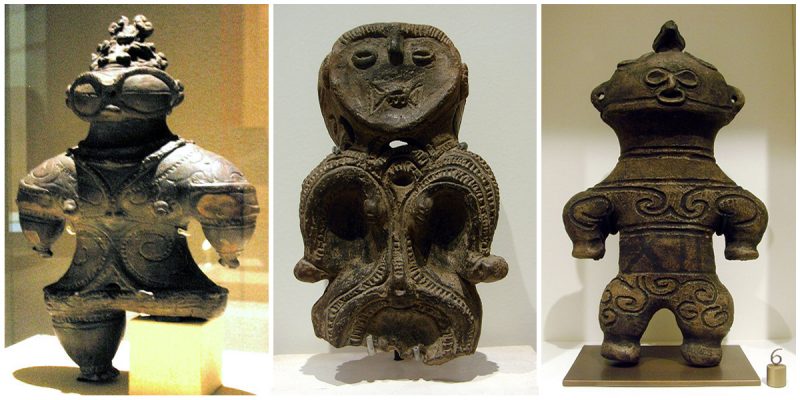Some of the most fascinating pottery ever made in Japan dates back to the Jomon period (10,000 BC to 300 BC). One of the most significant aspects of Jomon culture are their dogu: richly decorated humanoid and animal figurines shaped in clay, which appeared as early as the Incipient Period, roughly 14,000-4,000 BCE, but were mostly produced in the Middle Period.
The Jomon people are best known for their early pottery skills and are considered to have created the earliest forms of pottery in the world.
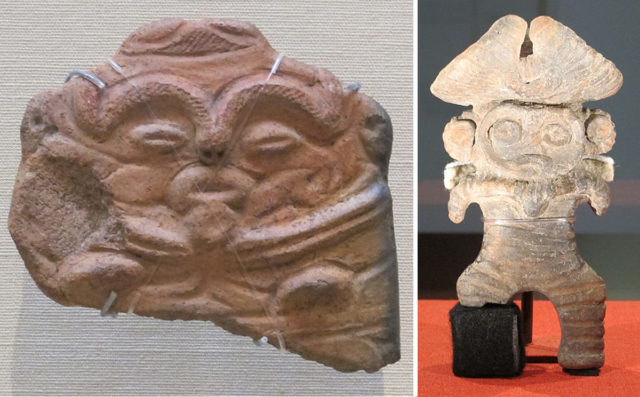
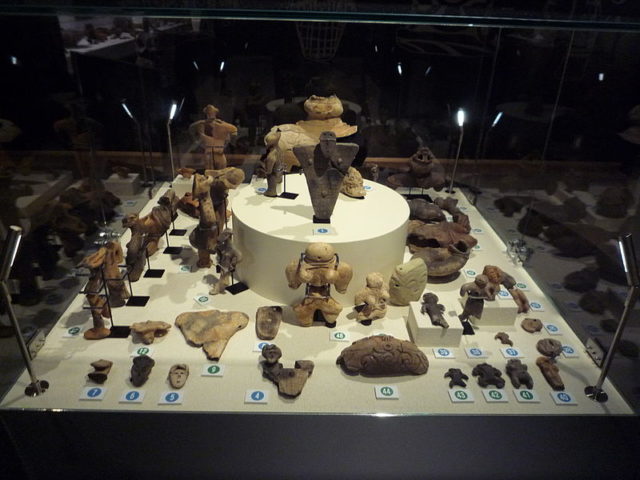
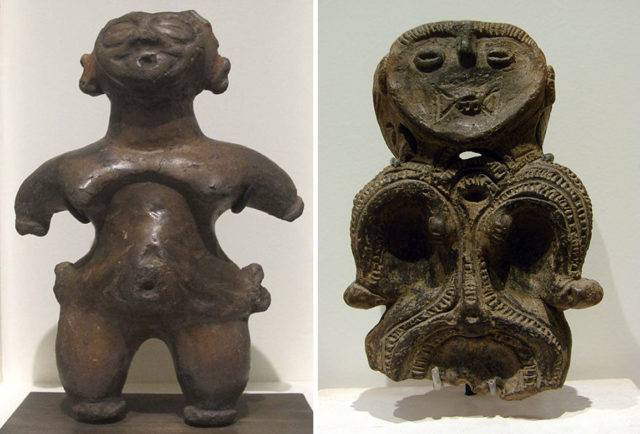
These statuettes underwent many forms of transformation throughout the various periods within the Jomon culture.
Only a few clay figurines from the early periods have been found. Early dogu from around 10,000 BC were abstract representations of the human figure and were quite small. By 4000 BC they had arms and legs and simple heads. By 3000 BC, the faces were fully formed.
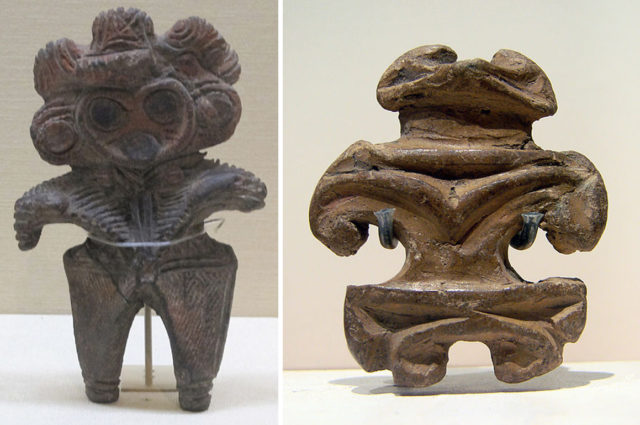
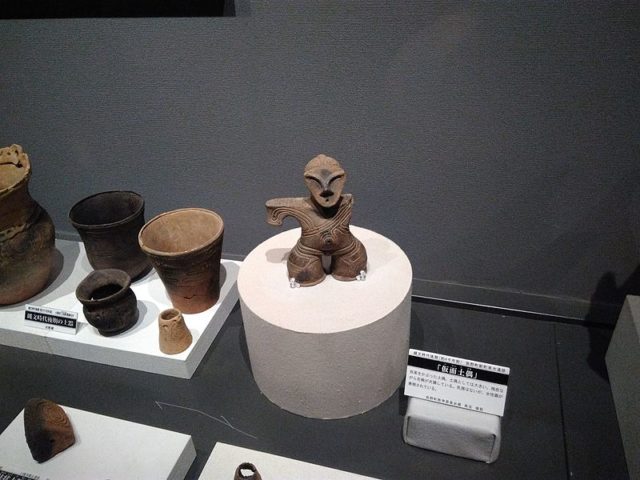
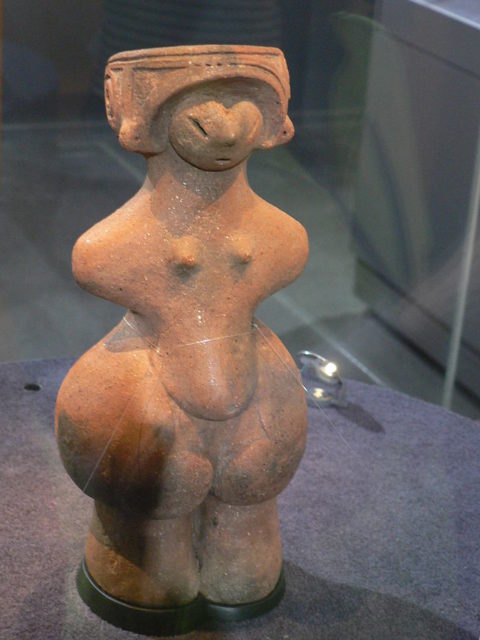
These incredible and yet strange figurines continue to amaze archaeologists and researchers until today. One theory is that these were goddesses to whom Jomon people prayed to for food and health. Other explanations are toys for children, or funerary offerings, or, according to some archaeological scholars, these works were most likely evidence of an early religious culture and shamanic rites.
The main agreement is the theory of them being a talisman for good health or safe childbirth.
Styles became more varied during the later part of the era. There are various types of dogu figures, categorized into four groups: “heart shaped (or crescent-shaped eyebrow),” “horned-owl type,” “pregnant woman type,” and perhaps most famous of all, a “goggle-eyed” dogu from Kamegaoka covered in stippled and corded markings.
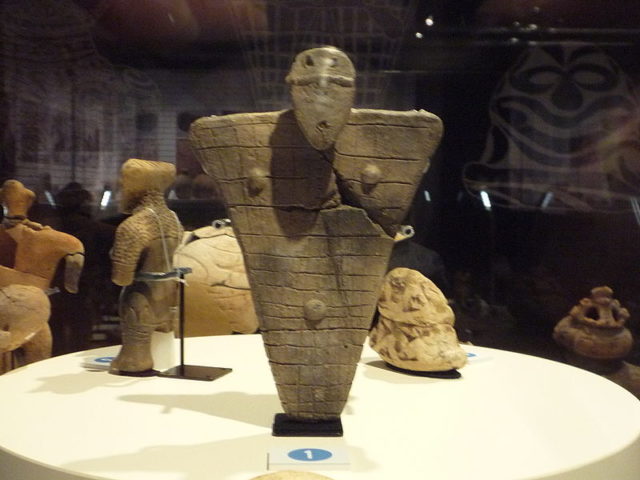
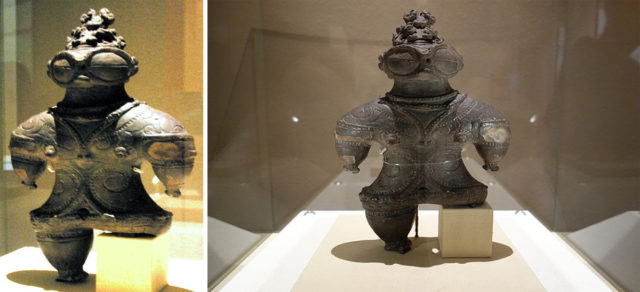
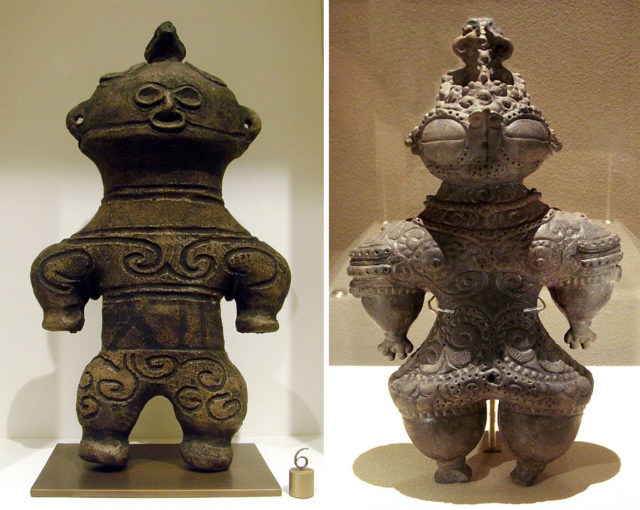
According to the National Museum of Japanese History, the total number of these highly stylized figurines found throughout Japan is approximately 18,000. The majority have been found broken, most of them missing an arm, leg or other body parts. Archaeologists cannot agree whether dogu were broken intentionally by their Jomon makers.
One theory is that parts of the figures may have been cut off in fertility rituals. By the Yayoi period, which followed the Jōmon period, Dogū were no longer made.
